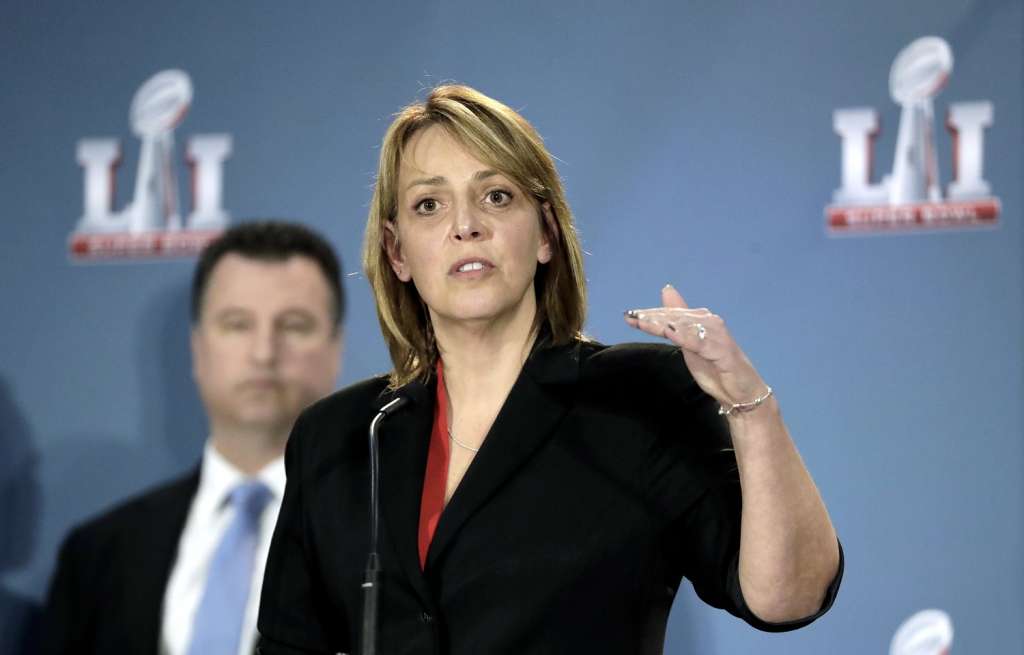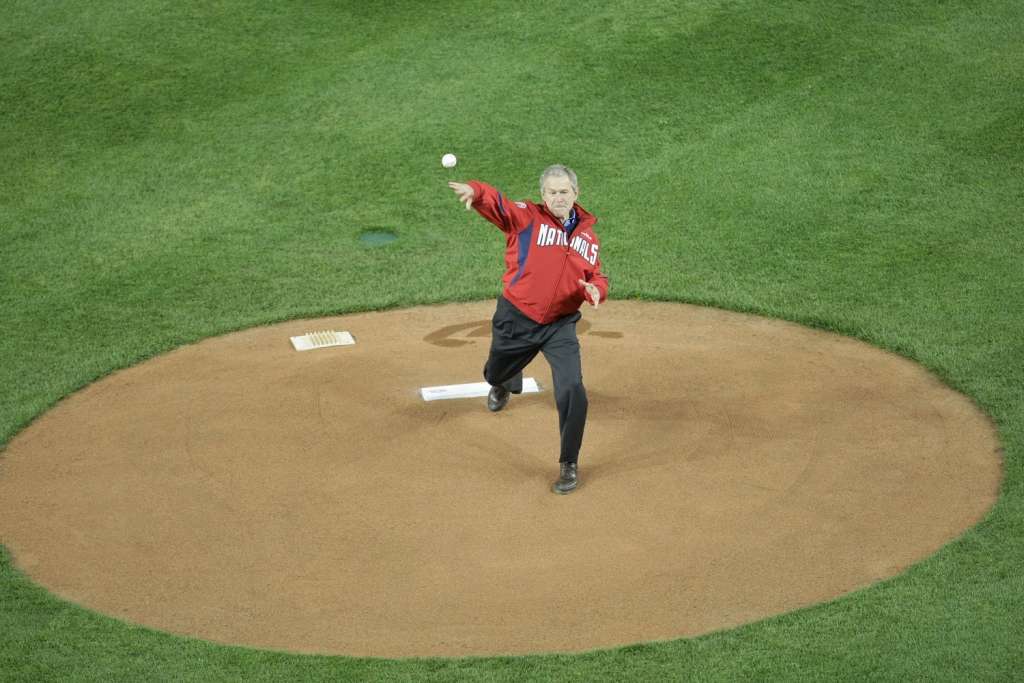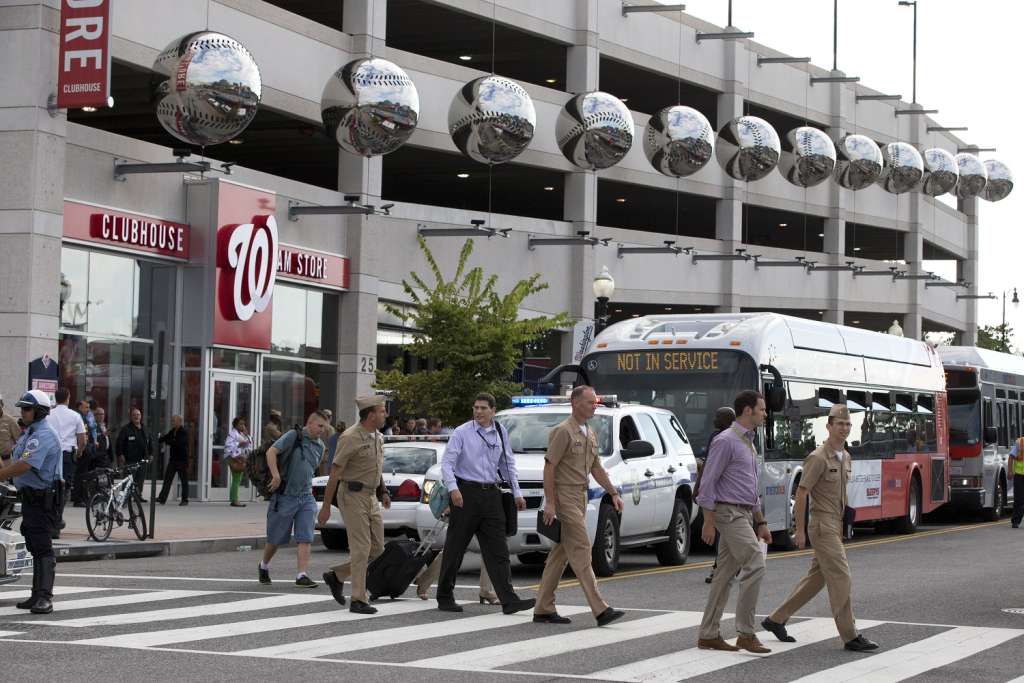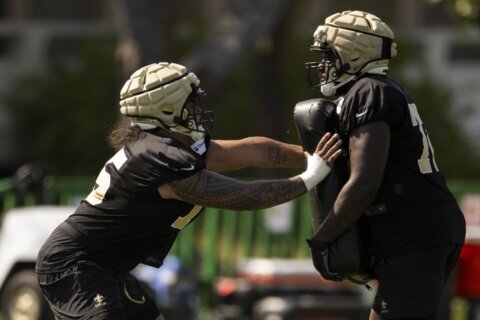WASHINGTON — As D.C. police chief for nine years, Cathy Lanier oversaw both of former President Barack Obama’s inauguration ceremonies, including the record-breaking 2009 affair that saw more than a million attendees across a vast, outdoor space with dozens of access points. From a security perspective, it’s hard to imagine anything more daunting. But this weekend, Lanier will face her biggest test yet: Super Bowl LI in Houston.
“This is a challenge much bigger than inauguration,” she told WTOP.
The answer to why there haven’t been more attacks on American sporting events is multifaceted. Given their high-profile, high-density nature, they are obvious targets. The escalation in security measures has no doubt helped deter those who may have considered such acts. But both Lanier and Adam Lasky, who spent nine years working for the Washington Nationals, admit there may be some serendipity in play as well.
“My first instinct about that is that it might just be luck,” said Lasky.
Lanier couldn’t point to any one reason.
“I really can’t,” she said, but, echoing observations by Lasky, said that the increased investment in security has paid off. “I will say that when you look across the professional sports leagues, all the colleagues that I’ve met and work with, the major sporting industry has taken security very, very seriously and over the past 10 years or so has really ramped up their profile on security for major sporting events.”
Before you ever get to the Super Bowl, there are 10 days of events leading up to Sunday. The Super Bowl Live and NFL Experience draw roughly 10,000 people each day, requiring a security perimeter of over 7,000 feet, stretching five city blocks in a major American city.
The NFL is working with 40 — yes, 40 — different federal agencies in addition to 4,000 private security, all on top of the four or five state and local police departments. They’ve installed 2.8 miles of concrete barrier to help secure the perimeter. And, like they do for every regular season game, they’ve cleared the skies above, the area around NRG Stadium designated as an exclusion zone.
Super Bowl host cities aren’t simply selected three years in advance for the fun of it — that’s when the security preparations begin. Plans for Houston were underway for better than two years before Lanier ever accepted her current position as head of security with the NFL. Organizers of next year’s Super Bowl in Minneapolis will be in Houston this week taking notes. Next week, when the game is over and everyone has moved on to other things, Lanier will fly with them back to Minnesota to take the next steps in preparation for hosting next year’s game.
***

D.C. has never hosted a Super Bowl. But the District holds plenty of major events each year — games, concerts, festivals — between its various venues.
“We have regular events that go on down at Verizon (Center), then we have the Nats Stadium, which is a bigger footprint and a little bit more of a security challenge because of the footprint and the larger number of people that come in,” said Lanier.
Nationals Park provides perhaps the widest array of obstacles. Though fans are encouraged to come in mostly through one gate, there are multiple entrances all around the facility. It’s outdoors and holds upward of 45,000 fans when standing room only tickets are sold. And it’s surrounded by city streets, including the busy South Capitol Street and the pedestrian haven of Half Street.
Adam Lasky worked with the Nationals in their ballpark operations department for nine years up through the 2014 season, dealing with many of these issues daily both at RFK and Nationals Park. He still works in logistical operations and has watched professional sports teams’ investment in security rise throughout his professional career.
“Even over the course of the years I was in the sport — and all of that was post-9/11 — the attention, focus and spending on these issues went up dramatically,” he said.
Some safety upgrades are obvious to any fan, like the league-wide implementation of metal detectors at the gates in time for the beginning of the 2015 season. Others are more subtle: A riser where trucks go in and out of a loading dock to prevent ramming and the removal of trash cans outside the park.
Despite increasing concerns about security, there have been precious few attacks on American sporting events in the last 20 years. Since the Olympic Park bombing in Atlanta in the summer of 1996, the Boston Marathon bombing of 2013 stands alone among major incidents.
The same isn’t true abroad. French police partially foiled a terror plot, as three suicide bombers killed just one person in an attempted attack on the Stade de France, part of the larger Paris attacks in November 2015. Just two months ago, a pair of explosions just outside Istanbul’s Vodafone Arena killed 48 people and injured more than 150 others. France claims to have thwarted a number of additional planned attacks last year, some targeting sporting events. And just because we haven’t seen those types of tragedies at home doesn’t mean there haven’t been major events with high security profiles.
***

Lasky says he can’t recall any major specific threats during his nine seasons with the team, but he had plenty of high profile events for which he had to prepare. Former Presidents Obama and George W. Bush each threw out first pitches at Nats Park, the latter on the venue’s opening night in 2008. That kind of exposure — a president out in the open, by himself, in front of 40,000 strangers — is pretty much a Secret Service nightmare.
“We’re working together, but whatever they say goes,” said Lasky. “It was the first day of the new park, and we weren’t even in control of facility. The Secret Service took hours to sweep the building before any of us could get in there, other than a few of us, on opening night.”
Nevertheless, the understanding and cooperation between team officials and local authorities is paramount to keeping such large crowds safe.
“We had constant dialogue with all the local and federal security agencies about threat levels and remaining vigilant,” said Lasky. “At the end of the day, you’re a sports team and they’re going to be looped in on these issues in a way you are not.”
He recalls that the biggest concern came for the 10-year remembrance of the 9/11 attacks. The Nats hosted the Houston Astros for a Sunday matinee game. Despite both teams being out of contention and a crowd of just over 24,000, Lasky says there was more security on that day than he can ever remember.
But D.C. presents other challenges, such as the 2013 Navy Yard shooting, just blocks from the ballpark on the morning of a home game day. In the immediate aftermath, the facility became a safe haven. Once the scheduled game that night was finally canceled, the ballpark transformed into the rendezvous point for families and law enforcement.
“We had people that were on the base that had evacuated come up to the ballpark to shelter there,” said Lasky. “It became the unification zone where everyone was bused off that day, where they informed the families of victims.”
Lanier was on the other side of that operation and every other major security challenge during her time in D.C.
“All the events that we had to manage with very short time turnaround in D.C. has helped me quite a bit now in knowing where to go for different assets and how to move things around,” she said.
***

Lanier’s challenge for her first Super Bowl has the added test of managing protests. A crowd of between 500 and 1,000 protesters arrived on site earlier this week to protest President Donald Trump’s executive order temporarily banning travel from seven Muslim-majority nations. Thankfully, everyone was peaceful and the Houston Police Department set aside space for them.
It’s just another item on a seemingly endlessly growing list of potential threats. But it’s a challenge Lanier embraces, one that drives her to stay one step ahead at all times.
“In this business, it’s just like my old job — when there’s big events coming up, everything keeps you up at night,” she said. “Mostly, what have I missed? What have I not thought about? Which is probably a good thing — keeping the mind going and making sure we haven’t missed anything.”






